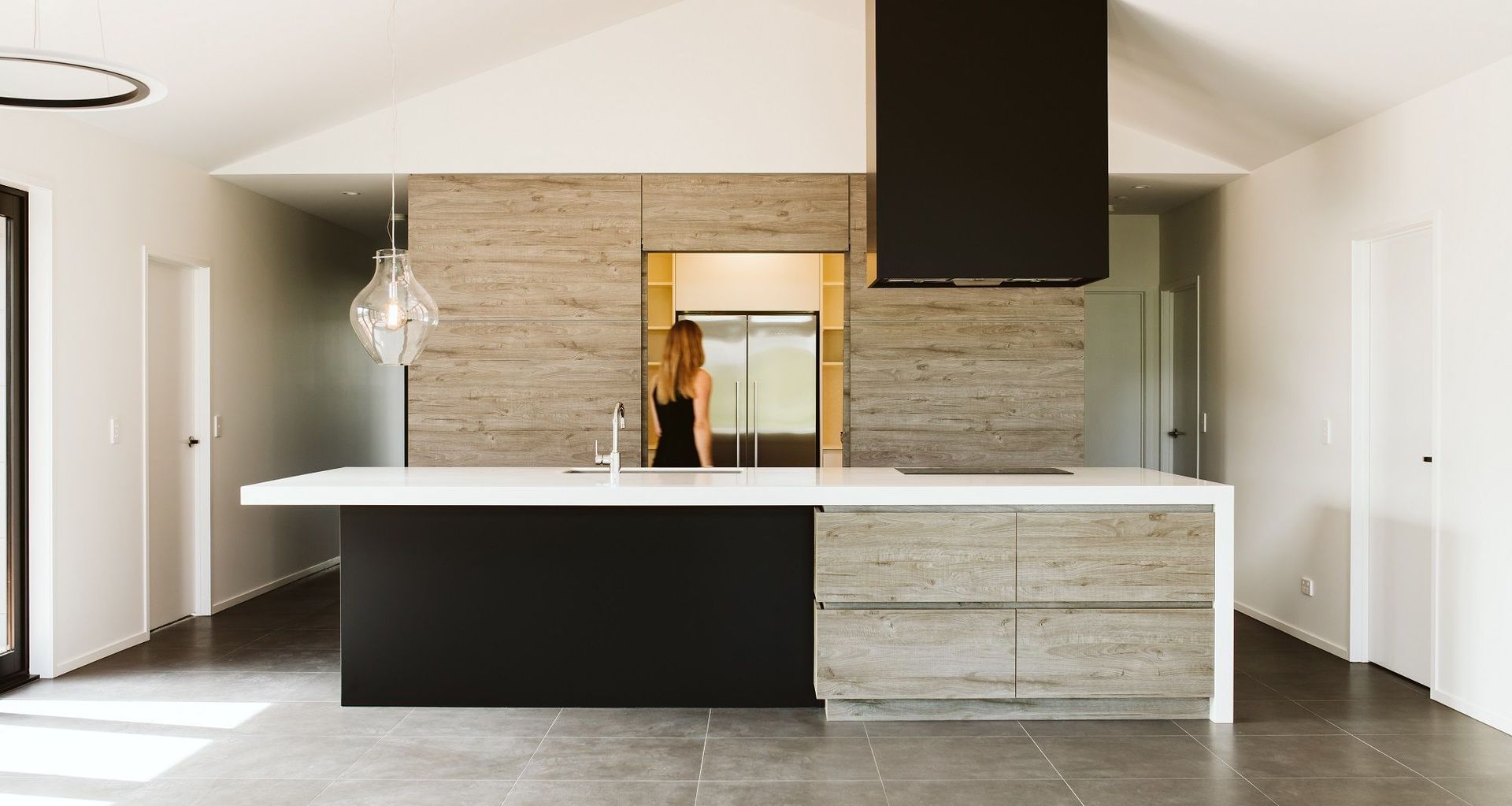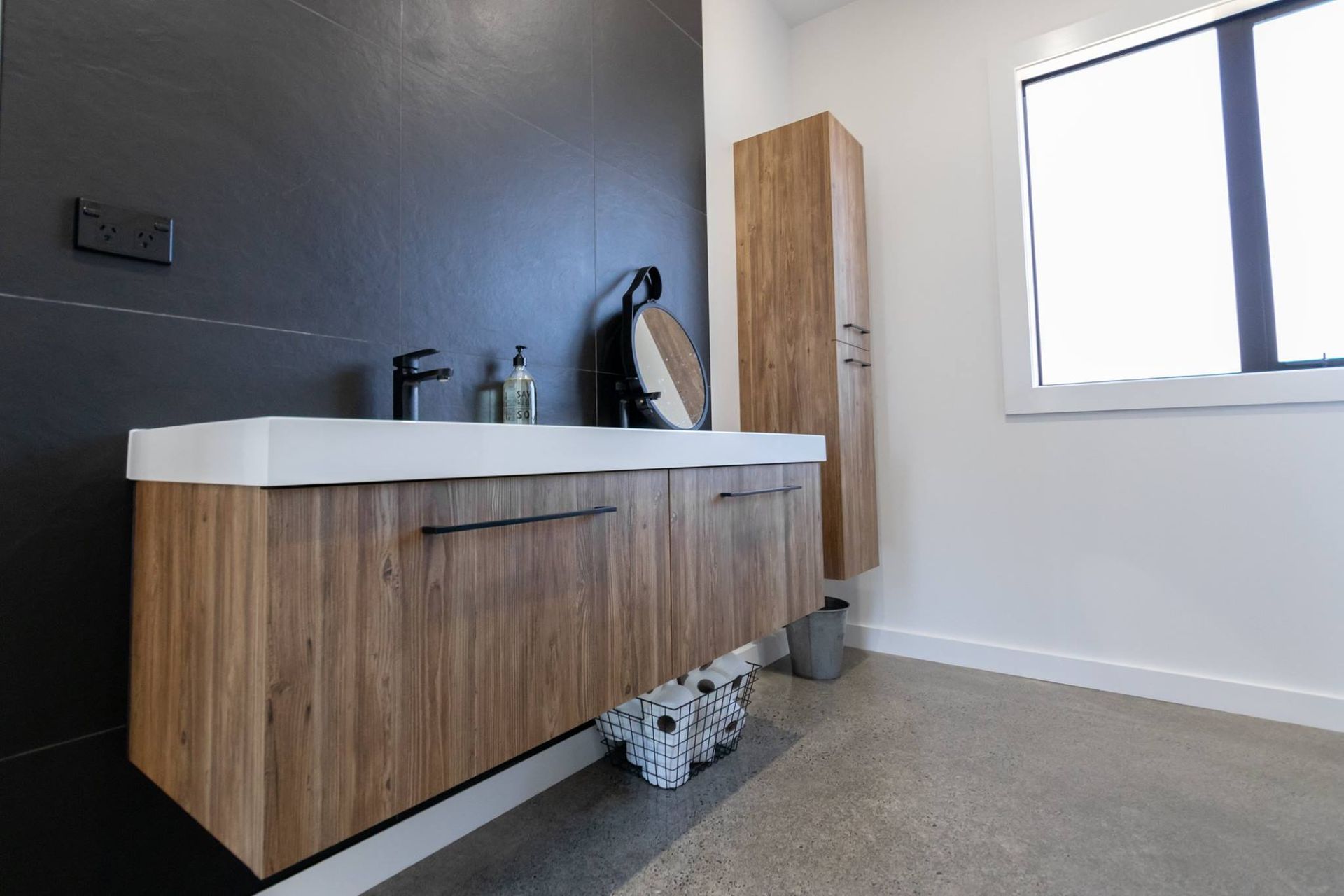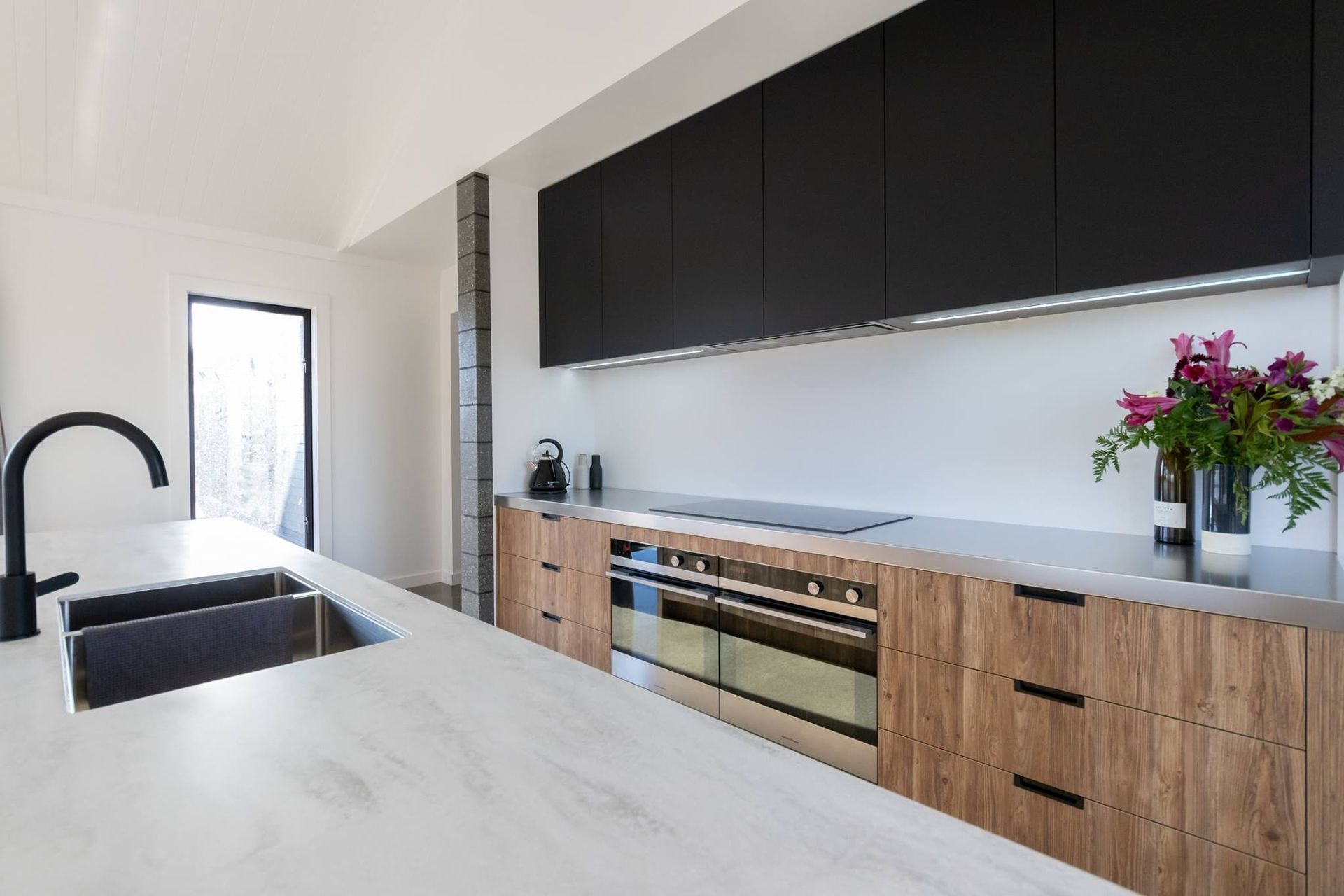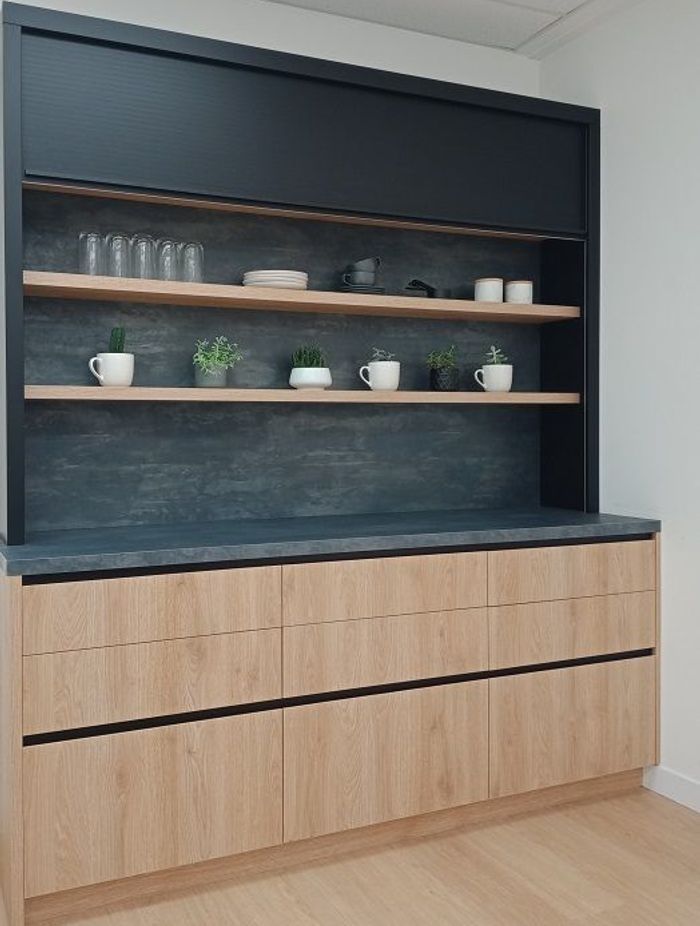Hyper realistic wood grain melamine cabinetry
Written by
25 July 2019
•
3 min read

Creating an authentic wood grain with melamine cabinetry has, until now, been relatively difficult to achieve. A new synchronised picture and texture combination has changed that, opening the door to a wide range of authentic timber finishes. We spoke to Sage Doors about this new technology.
Achieving an authentic wood grain finish with melamine has, until now, been difficult to achieve. Typically with melamine colours, there have been a choice of only four or five different textures that would be used on any board – flat colours or woodgrains. The pressing plates had standard grain patterns, which were pressed onto unrelated imagery.
That’s no longer the case with the availability of a new synchronised woodgrain range from Sage Doors. Synchronising textural plates with images creates an incredibly authentic look and feel, close to that of a real timber veneer, but significantly more cost effective and durable.
Sage Doors launched its Timbalook range in 2018 with five uniquely textured woodgrain finishes covering the full spectrum, from light to dark timbers with distinctive, unique grains.
“The finishes in this range have an incredibly natural look and feel. This technology is new in New Zealand and is quite unique in terms of the finish it creates,” Sage Doors’ Lydia Posthuma says. “Typically, it is used for kitchen cabinetry but due to its realistic look and feel, it has also been used for home features walls and in commercial fit outs.
“Typically, woodgrain finishes on melamine are created with a range of images which are then pressed with a choice of textural plates that don’t correspond with the picture. While some texture is introduced to the finish, the texture does not relate to the image underneath, creating a woodgrain look that is not very realistic at all.”
The release of Timbalook has opened up a new world of design possibilities in terms of the level of realism available using melamine. “Timbalook products have a really deeply textured, natural feel,” Lydia says. “They use multiple layers of the melamine paper when pressing the board, to achieve the deep, textural aesthetic.”
Sage Doors’ Timbalook melamine range has an extra large sheet size of 2800mm by 1830mm to allow for endless design opportunities. “The large sheet sizes allow for an added level of flexibility, allowing Timbalook to be specified in everything from small drawer fronts right through to entire wall panels,” Lydia says.
Each of the five Timbalook colours is named after a different New Zealand location - from Waiheke, a light, beachy look, through to Rangitoto, a dark volcanic-rock inspired palate.
“Timbalook creates a veneer look, at a fraction of the price. Timbalook is also much easier to work with, as it does not require any lacquering or colour matching. Due to the stability of the melamine surface, it won’t change colour over time in the way a natural timber or veneer does,” Lydia says. “There is no cutting, clashing or lacquering involved. Simply order online and we’ll deliver your panels ready to install. The hard and durable surface won’t mark easily in the way a veneer surface will either, and it’s easy to clean and maintain over time.”
Make sure you get in touch with Sage Doors on ArchiPro here to find out how you could incorporate Timbalook melamine panels into your next project.


